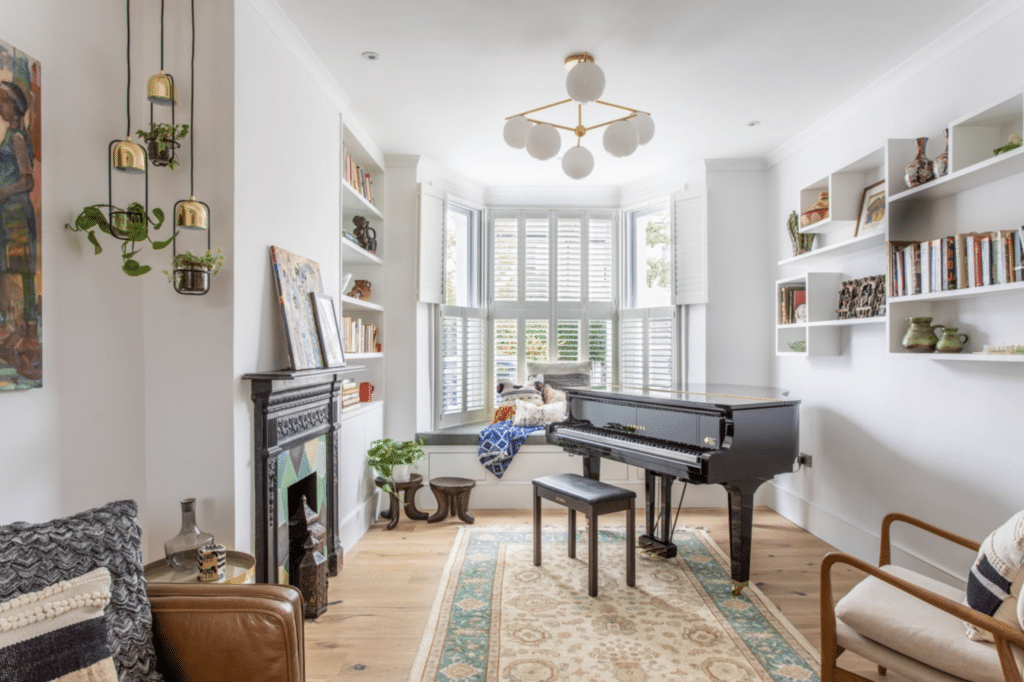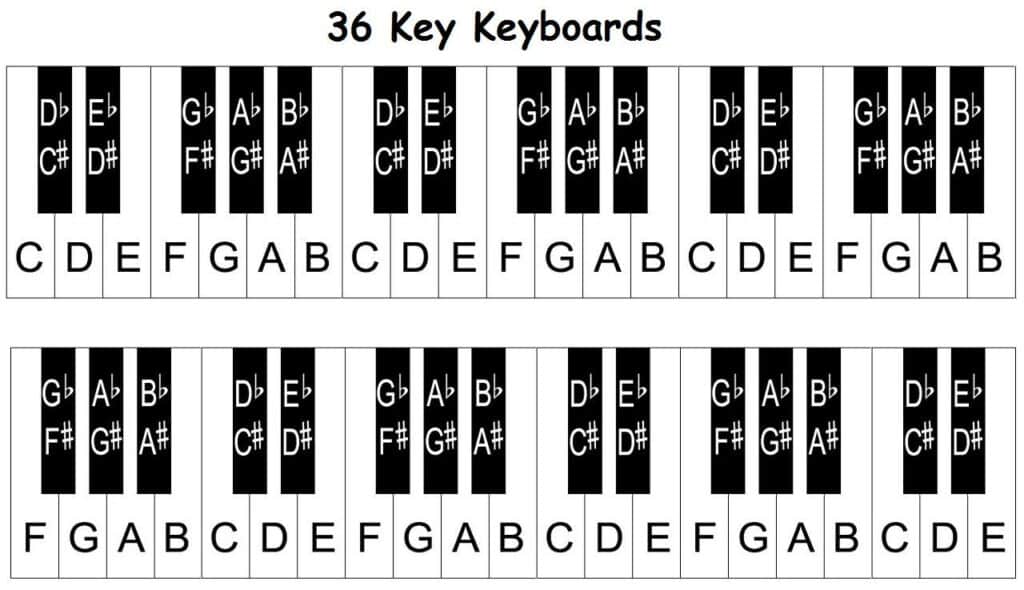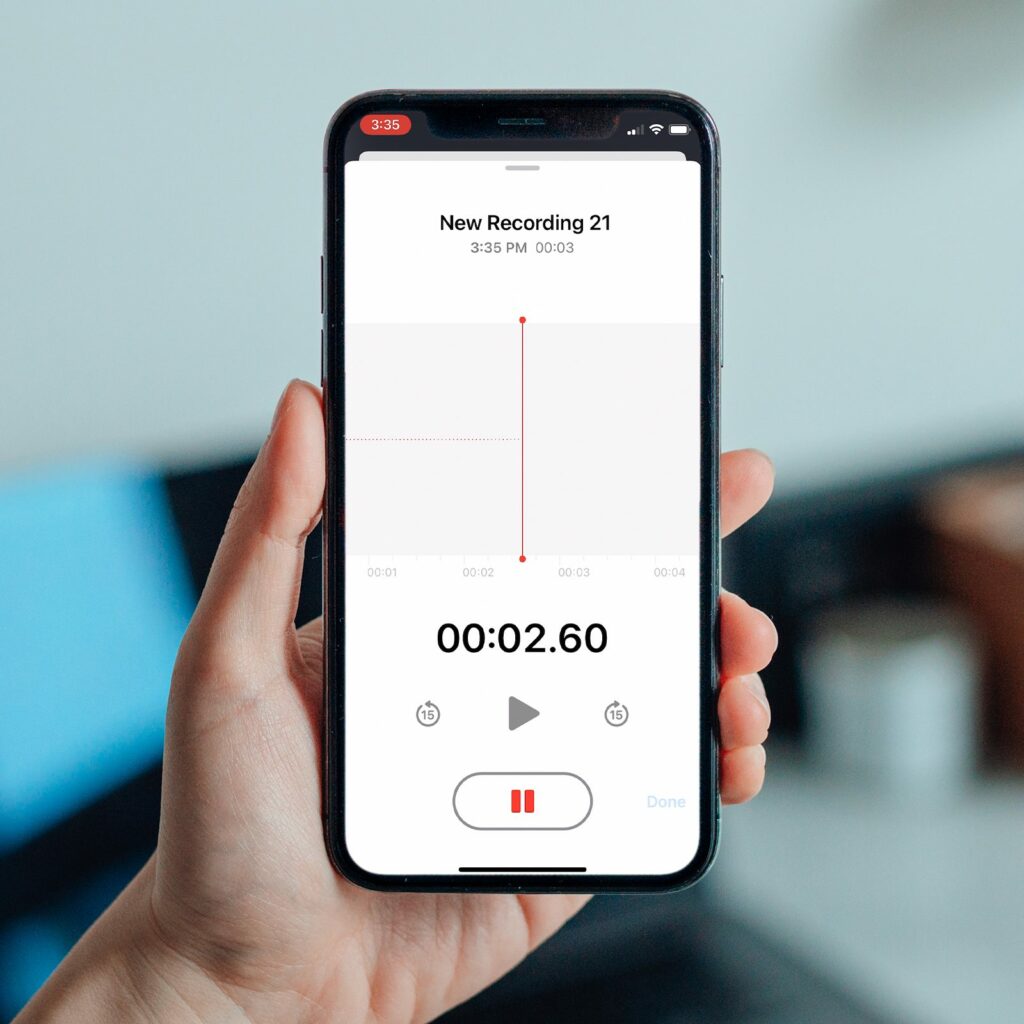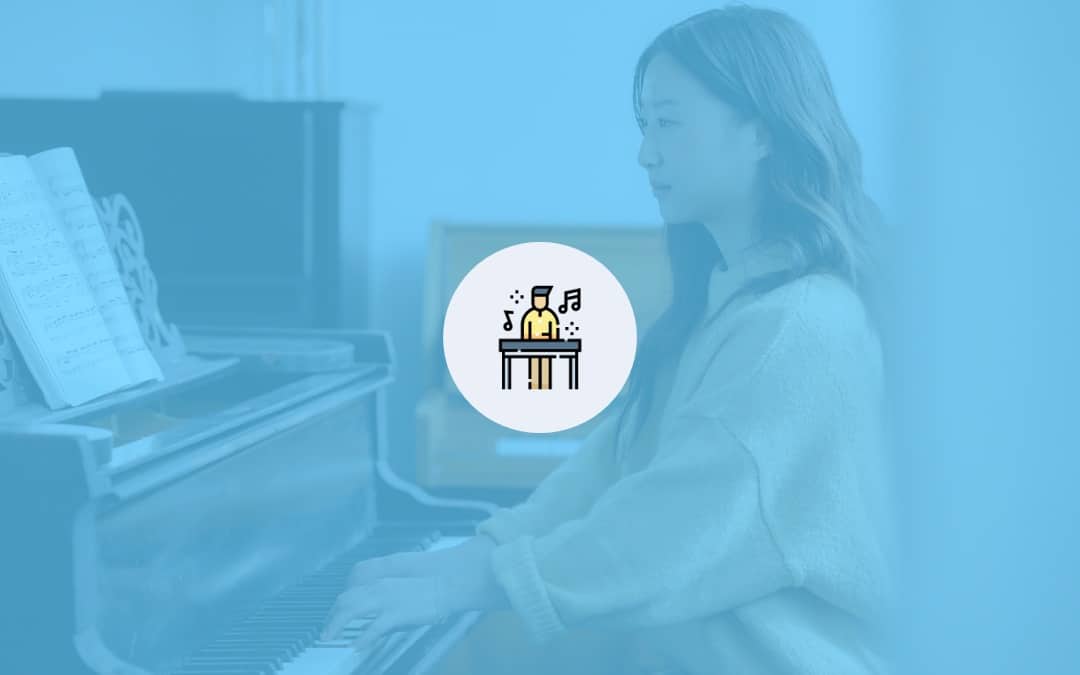Table of Contents
1. Introduction
A. Importance of Effective Piano Practice
Practicing the piano efficiently and correctly is crucial for any pianist, whether they are a beginner or an advanced player. Effective practice not only helps in acquiring new skills but also accelerates progress, improving overall musicianship. By implementing the right practice techniques and strategies, you can avoid developing bad habits, minimize frustration, and maximize your full potential!
B. Common Piano Practice Pitfalls
Many pianists, especially beginners, often encounter several challenges when it come to beginner piano practice. Some of these common pitfalls include:
- Inconsistent Practice Routines: Skipping practice sessions or not adhering to a regular schedule can hinder progress and make it difficult to maintain momentum.
- Lack of Focus: Practicing the piano without a clear goal or objective can lead to a lack of direction and wasted time. Incorporating these piano practice tips can help prevent this.
- Practicing too Fast: Rushing through pieces without properly working on challenging sections can result in the development of bad habits and poor technique. Poor technique can then lead to injury.
- Neglecting Music Theory: Failing to build a strong foundation in music theory can limit your understanding of the music you play and slow down your progress.
- Inadequate Self-Assessment and Feedback: Not evaluating progress or seeking external feedback can make it difficult to identify areas for improvement and to correct mistakes. Having a quality teacher helps tremendously.
C. Goals of This Blog Post
To provide you with practical tips and strategies so you can learn how to practice piano effectively and correctly so that you can establish a solid practice routine, improve your playing technique, and ultimately achieve your musical goals. Topics include setting up an optimal practice environment, developing a consistent practice routine, implementing efficient practice techniques, building a strong foundation in music theory, evaluating progress, and seeking feedback.
Interested in Learning More About Piano Lessons Here?
Select an option below to you can learn more now.

Kids & Teen Lessons
Build their self-esteem. Playing the piano is meant to be fun and engaging, not stale and boring.

Adult Lessons
It’s never too late to start playing the piano. You’ll be surprised at how quickly you can play music.
2. Setting Up an Optimal Practice Environment
A. Creating a Dedicated Piano Space or What I like to Call a Practice Nook
- Location: Choose a room or area in your home where you can set up your piano and practice without being disturbed. Ideally, the space should be quiet, have a door to minimize noise, and provide enough room for you and your piano. If possible, avoid practicing in high-traffic areas or shared spaces, as these can be distracting and interrupt your focus.
- Comfort: Ensure that your practice area is comfortable by setting up a proper piano bench with an adjustable height to promote good posture. Make sure the room has a comfortable temperature and adequate ventilation to avoid fatigue during long practice sessions. Consider adding a rug or carpet to dampen sound and create a more pleasant practice environment.
- Lighting: Proper lighting is essential for reading sheet music and avoiding eye strain. Place a lamp or adjustable light near your piano to illuminate the music stand. Ensure that the room has enough natural or artificial light to maintain a clear view of your keys and sheet music. Practicing in a dark basement with no natural light can be a bit depressing.

B. Removing Distractions
- Electronic devices: Turn off or silence electronic devices, such as phones, tablets, and computers, to minimize interruptions during your practice time. If you need to use a device for a metronome, sheet music, or recording, set it to “do not disturb” mode and keep it out of reach to avoid the temptation of checking messages or browsing the internet.
- Noise: Reduce background noise in your practice space by closing windows, doors, and using curtains or blinds. If necessary, consider using soundproofing materials or acoustic panels to further minimize external noise. If you share your home with others, communicate your practice schedule to them so they can be sure to be quiet while you work.
- Clutter: Keep your practice area clean and organized by removing any unnecessary items or clutter. A tidy space helps create a focused mindset and reduces distractions during your practice sessions.
C. Organizing Your Piano Materials
- Sheet music: Keep your sheet music organized and easily accessible. Use a binder, folder, or music stand to store your pieces, and consider organizing them by genre, difficulty level, or in the order you plan to practice them. This will save time and prevent interruptions during your practice sessions.
- Practice log: Maintain a practice log or journal to track your progress, set goals, and make notes on specific pieces or techniques. This will help you stay organized and focused, allowing you to measure your improvement over time.
- Metronome: A metronome is an essential tool for developing a consistent sense of rhythm and timing. Keep a metronome nearby during your practice sessions and use it regularly to work on your tempo, dynamics, and articulation. Choose a metronome that is easy to use and provides a clear, audible beat, or consider using a metronome app on your phone or tablet. You can also Google the word “metronome” and a free one will come up.
3. Developing a Consistent Practice Routine
A. Scheduling Regular Practice Sessions
- Daily vs. weekly practice: For most pianists, daily practice is more beneficial than practicing only a few times a week. Daily practice helps reinforce muscle memory, improves technique, and maintains progress. Aim for at least 30 minutes to an hour of focused practice per day, depending on your experience level and available time. If daily practice is not possible, try to practice at least three to four times per week, with each session lasting at least an hour. Most people have at least 15 minutes in their day for practice so if 30 minutes is impossible, then do 15 minutes each day because something is always better than nothing.
- Setting aside specific times: Establish a regular practice schedule by setting aside specific times each day for piano practice. Choose a time when you are most alert and focused, such as early morning or late afternoon. Consistency is key, as it helps to create a routine and reinforces the habit of practicing regularly.
B. Warming Up
- Finger exercises: Begin each practice session with a series of finger exercises to increase flexibility, strength, and dexterity. Some popular exercises include Hanon exercises, Czerny exercises, and simple five-finger patterns. Start slowly and gradually increase the tempo as your fingers warm up.
- Scales: Practice major and minor scales to reinforce finger patterns, develop finger independence, and improve your understanding of key signatures. Work on scales with different articulations, dynamics, and speeds to build technique and increase your familiarity with various musical expressions. Plus, it makes it more fun!
- Arpeggios: Arpeggios help develop finger strength, control, and precision. Incorporate both major and minor arpeggios into your warm-up routine, focusing on smooth transitions between notes and maintaining evenness in your playing. Like scales, practice arpeggios with various articulations, dynamics, and speeds.

C. Structuring Your Practice Time
- Breaking down practice into sections: Divide your practice time into manageable sections, focusing on specific skills or pieces. This can include technique exercises, sight-reading, repertoire work, and improvisation. Allocating time to each section ensures a well-rounded practice session and prevents spending too much time on a single aspect of your playing.
- Varying your practice activities: Keep your practice sessions engaging and productive by varying the activities within each section. For example, alternate between practicing different scales or arpeggios, work on contrasting repertoire pieces, or explore various improvisation techniques. This helps prevent boredom and ensures continuous growth in different areas of your playing.
- Setting specific goals for each session: Before starting your practice session, set clear and achievable goals for each section. These goals can be related to mastering a specific passage, improving a particular technique, or increasing the tempo of a piece. Setting specific goals helps maintain focus, provides a sense of accomplishment, and ensures that you are making progress in each practice session.
4. Efficient Practice Techniques
A. Slow Practice
- Importance of slow practice: Slow practice is essential for developing proper technique, accuracy, and control in piano playing. By practicing at a slower tempo, you can focus on correct fingerings, hand position, and coordination between hands. Slow practice also allows you to pay attention to dynamics, articulation, and phrasing, which are crucial for musical expression.
- How to practice slowly: Begin by playing a passage or piece at a significantly reduced tempo, ensuring that you maintain correct technique and accuracy. Use a metronome to help maintain a steady pace, and focus on playing each note with precision and intention. Concentrate on the details of the music, such as dynamics, articulation, and phrasing, while keeping a relaxed posture and hand position.
- Gradually increasing tempo: Once you are comfortable playing a passage or piece slowly with proper technique and accuracy, gradually increase the tempo using a metronome. Increase the speed in small increments, ensuring that you can still maintain precision and control. Continue this process until you reach the desired tempo, making sure to maintain proper technique and musicality throughout. Increasing the tempo too drastically will undo all the work you’ve done at the slow tempo so don’t jump the gun!
B. Isolation and repetition
- Identifying Problem Areas: As you practice, take note of any sections or passages that are particularly challenging or that require extra attention. These problem areas may include difficult fingerings, complex rhythms, or tricky hand coordination. Mark them with a star or circle them so you know exactly where to look.
- Practicing in Small Sections: Break down difficult passages into smaller sections or “chunks” that can be practiced independently. Focus on one section at a time, working on the specific challenges it presents. This targeted approach helps you overcome obstacles more efficiently and ensures that you are giving adequate attention to each part of the music.
- Repeating Sections Until Mastery: Once you have isolated a problem area, practice it repeatedly with the goal of achieving mastery. Use a combination of slow practice and gradual tempo increases to build confidence and control. Continue to repeat the section until you can play it comfortably and accurately at the desired tempo.
C. Mental practice
- Visualizing the Music: Mental practice involves visualizing yourself playing the piano without physically touching the instrument. Close your eyes and imagine playing a passage or piece in as much detail as possible, including fingerings, hand movements, and musical expression. This technique can help reinforce muscle memory, improve your understanding of the music, and increase your confidence in your playing. Your brain is still downloading the information you’ve put in it long after you leave the piano!
- Auditory Imagery: Along with visualizing the physical aspects of playing, use auditory imagery to “hear” the music in your mind as you mentally practice. This can help develop your inner ear and improve your ability to listen critically and imagine the desired sound before playing. Really think about how you want a note to sound before just plunking down the key.
- Practicing Away From the Piano: Mental practice can be particularly useful when you are unable to physically practice on a piano, such as during travel or late at night. By incorporating mental practice into your routine, you can continue to work on your piano skills and reinforce your understanding of the music even when you are away from the piano.
5. Building a Strong Foundation In Music Theory
A. Understanding the fundamentals
- Notation: Familiarize yourself with the basics of musical notation, including note values, rests, time signatures, and clefs. Understanding notation is essential for reading sheet music and interpreting the composer’s intentions accurately. Regularly practice sight-reading and learn intervals to improve your ability to read and interpret notation efficiently.
- Key Signatures: Learn the key signatures for major and minor scales and understand how they relate to the Circle of Fifths. Knowing key signatures helps you recognize the tonality of a piece and provides a framework for understanding the relationships between notes, chords, and scales.
- Chord Structure: Study the structure of major, minor, diminished, and augmented chords, as well as various chord inversions. Understanding chord structure allows you to identify chords within a piece quickly, which can help with memorization, interpretation, and improvisation.

B. Analyzing your music
- Identifying Patterns: Examine your sheet music for recurring patterns, such as common chord progressions, rhythmic motifs, or melodic phrases. Recognizing these patterns can help with memorization and help you develop a deeper understanding of the music’s structure.
- Recognizing Chord Progressions: Learn to identify common chord progressions, such as the II-V-I, IV-V-I, or I-V-vi-IV, in your music. Understanding these progressions can help you anticipate chord changes, improve your sight-reading skills, and provide a foundation for improvisation.
- Understanding the Piece’s Structure: Analyze the form of your music, such as binary, ternary, rondo, or sonata form. Recognizing the structure of a piece can help you break it down into more manageable sections for practice and provide insight into the composer’s intentions.
C. Applying Music Theory to Practice
- Simplifying Complex Passages: Use your knowledge of chords, scales, and key signatures to simplify difficult passages by recognizing underlying patterns or structures. This can help you break down complex music into more easily understood components, making it easier to learn and memorize.
- Predicting and Memorizing Music More Easily: Understanding music theory allows you to predict upcoming chords, melodic patterns, or key changes based on your knowledge of common progressions and structures. This can make memorizing music faster and more efficient, as well as improve your sight-reading skills.
- Improving Sight-Reading Skills: A strong foundation in music theory can significantly enhance your sight-reading abilities. With a solid understanding of notation, key signatures, intervals, and chord structures, you will be better equipped to read and interpret new music quickly and accurately. Incorporate regular sight-reading practice into your routine to further develop this skill. If you want to be able to play new things quicker, you need to work on sight reading consistently to develop that skill just like anything else.
6. Evaluating Progress and Seeking Feedback
A. Self-assessment
B. External feedback
- Recording Your Practice Sessions: Regularly record your practice sessions using an audio or video recording device. Review these recordings to objectively assess your progress, identify areas for improvement, and monitor changes in your technique, tone, and musicality over time. Recordings can help you spot issues that may not be apparent during practice and serve as a valuable tool for self-improvement. It will also help with performance anxiety.

- Identifying Strengths and Weaknesses: Reflect on your playing and pinpoint areas that are great and areas that need improvement. Be honest with yourself about your strengths and weaknesses, and use this information to guide your practice sessions and set goals for future growth.
- Working With a Teacher: Work with a qualified piano teacher to help guide your practice, provide constructive feedback, and offer expert advice on technique, interpretation, and repertoire. Taking regular piano lessons with a teacher can help you stay motivated, focused, and accountable in your practice while providing personalized guidance tailored to your specific needs and goals.

- Participating in Masterclasses: Attend or participate in masterclasses, where experienced musicians or educators offer feedback and instruction on performance and technique. Masterclasses can provide valuable insights into various aspects of piano playing, expose you to different teaching styles, and offer fresh perspectives on your music.
- Seeking Feedback From Peers: Share your playing with fellow musicians, friends, or family members and ask for their feedback. They may offer a different perspective or notice aspects of your playing that you may have overlooked. Be open to constructive criticism, and use the feedback to refine your practice and improve your skills.

7. Conclusion
- Key Points: Practicing efficiently and correctly involves setting up an optimal practice environment, developing a consistent practice routine, using effective practice techniques, building a strong foundation in music theory, and regularly evaluating progress and seeking feedback. By using these strategies, you can maximize your practice time, feel more accomplished, and ensure continuous improvement.
- Encouraging Continuous Improvement: Remember that piano playing is a lifelong journey, and there is always room for growth and development. Stay curious, continue to set new goals, and embrace challenges as opportunities for learning and growth. Persistence, patience, and consistent practice are key to becoming a better pianist. It requires discipline, which is doing something whether you want to or not because you know you should. Making excuses for yourself will only hurt you in the end and put you further away from your goals.
- Reminding Readers of the Long-Term Benefits of Efficient Practice: Efficient and correct practice not only leads to faster progress but also helps to prevent bad habits, injuries, and frustration. If you use these strategies, you will build a strong foundation for a lifetime of being able to play all the things you love and have an amazing outlet to express yourself.
Interested In Learning More About Lessons Here?
Select an option below to you can learn more now.

Kids & Teen Lessons
Build their self-esteem. Playing the piano is meant to be fun and engaging, not stale and boring.

Adult Lessons
It’s never too late to start playing the piano. You’ll be surprised at how quickly you can play music.
8. FAQ
What is the best way to practice piano?
The best way to practice piano is by following a structured routine that includes warm-up exercises, technique work, and repertoire practice. It is also important to focus on the areas that need improvement and break down difficult passages into smaller sections to work on them. Regular and consistent practice, along with seeking feedback from a teacher or mentor, can help you progress and achieve your goals.
What should a beginner practice piano?
For beginners, it is important to start with basic skills such as proper hand positioning and finger strength exercises. Playing simple songs and scales can also help build a foundation in technique and music theory. As they progress, beginners can move on to more challenging repertoire and expand their musical vocabulary.
How do I get myself to practice piano?
Motivating yourself to practice piano can be challenging, but setting achievable goals and breaking down your practice routine into smaller sections can make it more manageable. Finding a practice space that is comfortable and free from distractions, scheduling specific practice times, and rewarding yourself after successful practice sessions can also help you stay motivated and consistent.
Q: Is practicing piano 1 hour a day enough?
Practicing piano for one hour a day can be enough for some pianists, especially beginners or those with limited time. However, the quality of the practice time is more important than the quantity. Focusing on specific goals, breaking down difficult passages into smaller sections, and seeking feedback from a teacher or mentor can help maximize the effectiveness of your practice time. As you progress, you may need to increase your practice time to continue improving.



